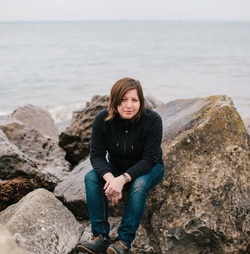|
Recently I've have alot of questions through my contacts page about sourcing Dubied machines...as well as fairly detailed questions about technique and broader views on the knitting industry. While I do like helping, answering all of these emails during production time is not really practical. Thus this post is aimed to provide some of those answers.
I love these machines. Where can I get one? You can search Ebay, Kijiji and Craigslist for used machines. If you are searching for parts try Jerry Douglas in Hawick, Scotland at this email. So far he has been able to supply fairly esoteric yet high quality needles and accessories. He also occasionally has machines available and will ship internationally. Or contact KMS Kuba (Instanbul) or Tortex (England) for current stock. There is no North American dealer or shop to buy these machines. IMS in Montreal supplies computerized machines but no hand flats. Another avenue to try is Wotol and Exapro. You just have to search...and restore. How did you restore your machines? I learned from my Dad, who is a clockmaker. You clean off the dirt, wash with gasoline, remove any burrs, oil it, make sure all needles are not broken or bent and try it out. If there are further issues you will need to disassemble the machine. When creating knitwear what techniques do you use ? Fully fashioned and linked by hand or cut and sew or a other techniques? And why do you use this technique in particular? I use all of the above. Techniques used are predicated on the design and aesthetic but also the speed at which I can make it. So I might create yardage for cut and sew for one design but then use fully fashioned techniques with a hand sewn cast off for another. From a production stand point I also build enjoyment into my process, so techniques which are too frustrating or time consuming are eliminated. I define production enjoyment as building in a certain amount of flexibility and variation. You refer back to a lot of old manuals and magazines on your website, do you feel there isn't a lot of updated resources available for knitwear using older machinery? Yes I think there are old resources for using old machinery. I think generally speaking the last 30+ years has drained the western world of skilled knitwear technicians and workers and that if anything there has been a general lack of demand (because of lack of opportunity) for resources resulting in a sort of knowledge vacuum. Any knowledgeable technicians I have spoken to are over 50 years of age (but I am located in Canada so there may be a regional difference). There are a number of recent general publications on knitwear technology by Black and Spencer but they are more general overviews. I recommend Knit 1's general overview of industrial knitting as a good primer here. It comes in a downloadable format. What are your opinions on the advances in knitwear technology ? I think generally the advances of mass production have been amazing, necessary (historically speaking) and useful. A lot of the advances were in aid of supplying troops during war as well developing medical aids, etc. I also think to cloth people on a mass level, that advances in knitwear technology have been very useful. However I do think people forget the time investment and resource investment required to create a computer file for an advanced knitting machine. There are many adjustments a human can make to tension disks and colour changes that have to be built into a garment file. Software and user interaction versus machine and user interaction can end up defining and directing the look of the garment. Do you see the design craft of knitwear being lost because of technological advances? No. I think historically speaking there will always be people like me that recognize the importance/ usefulness of older technologies. In terms of opportunity and growth I think we are at a special place now where many practitioners are older and alot of work has gone overseas. There is also sharp division between hand flat knitting machine production practices and costs versus industrial computerized production. Hand flat technology for me has a certain production agility to it resulting in smaller batches of product.
0 Comments
Leave a Reply. |
Anna is a Hamilton based knitwear and textile practitioner blogging about her collection development as well as pre-1950's knitwear technology.
Links
Emma Gerard Make something bookhou Iben Hoej krystalspeck workshop bespoke truckee amy lawrence designs Categories
All
|


 RSS Feed
RSS Feed